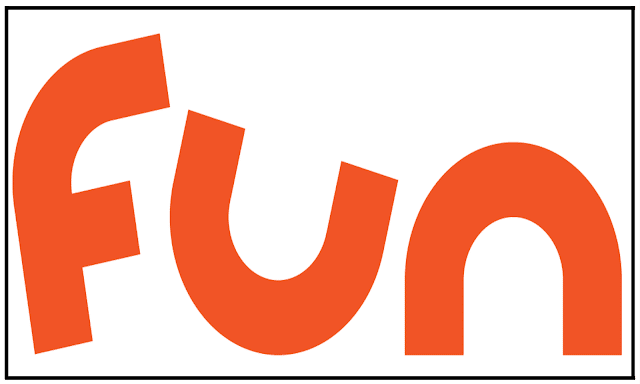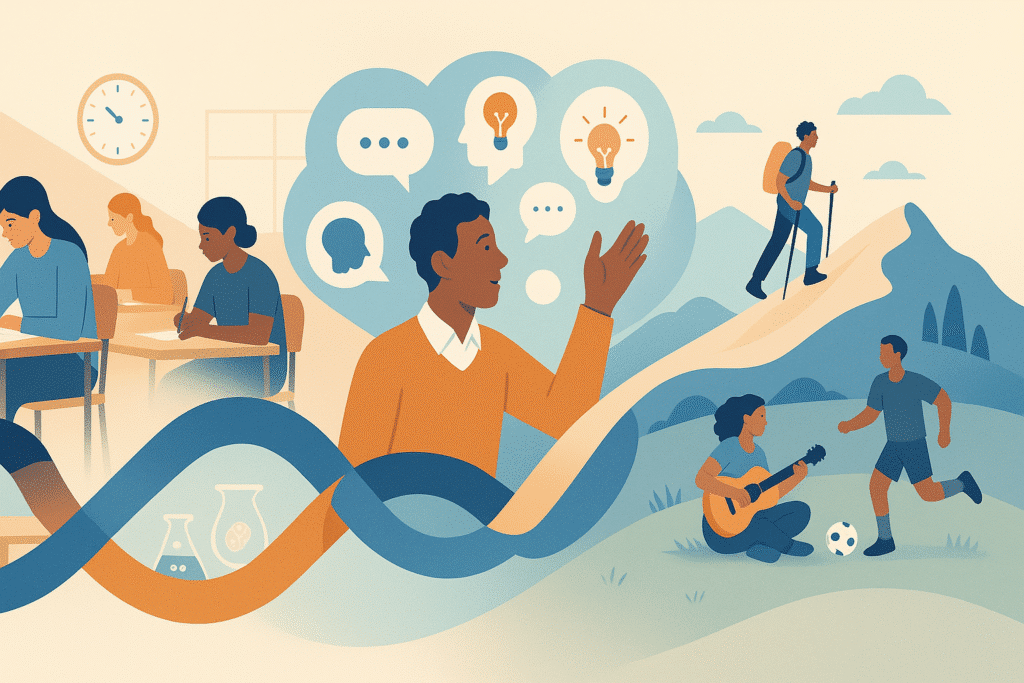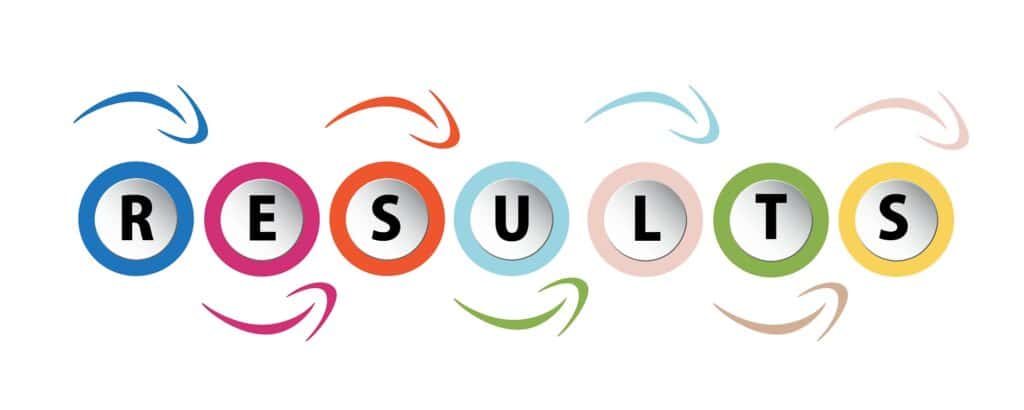I was late for an appointment at the weekend, and needing to get to 27th floor quickly, I found myself pressing the lift button again and again, harder and harder. My wife, ever-patient, gently put her hand on my arm, tilted her head and raised her eyebrows; not a word was uttered. We both knew that’s not how lifts work, but I had somehow forgotten.
That rather common (and embarrassing) example exposes something interesting and important about the way we think; that we rely on mental models of how things work, especially when we want to change them. Here, I was thinking in an analogue way; as if the lift button were like a water tap where the further you turn it, the faster the water flows. But the lift button works differently – and the lift didn’t come any faster, no matter what I did to the button. I was applying the wrong model.

It turns out that the principle here can have real and damaging, even dangerous consequences. Designer David Norman gives the example of turning the thermostat of an oven to a maximum temperature, to get it to the correct cooking temperature as fast as possible. This is the same mistake as in the lift example, based on a false model of the way ovens work – and if the person wanders off or forgets, this can cause a fire. Similarly, when a driver unaccustomed to anti-lock brakes, skids, he may mistake the vibration for brakes failing and take his foot off the pedal – leading to an accident.
I am wondering if we can apply this thinking to education. In our efforts to improve student learning, what are our underlying models of learning, and of schools in general?
One model for learning is that it’s like a staircase – a steady ascent. If that’s your model then it can be hard to understand why a once-easy subject has become hard; or why assessment grades can fall. But if your model is, for example, the stock market – which rises steadily over the long-term but which can have its ups and downs – then it’s easier to take a more measured view.
Furthermore, the staircase model suggests that there is one single direction of travel. In reality, learning has several dimensions (for example knowing something, understanding something, or being able to do something are all quite different) and different student take different paths (progress in the arts looks quite different to that in the sciences, which are again different to languages). So the staircase model is limited and we need alternatives to complement it.
That need for multiple models extends more widely too – in the whole conception of schools. This is a well-trodden path in the literature; and I offer a few models in the table below. When we are talking about the school buses or canteen, the factory model is probably most helpful – but if we extend it to the classroom then we’ll be shoehorning a diverse student population into a single mould. While the race model may work for a sports competition, taken too far it will create a hostile and intimidating environment. The garden model supports individuality but misses that there are common standards to which to aspire and adhere.
| if schools are like… | …then students are the … | …and school should be about… | …and so then learning should… |
| factories | product | …the efficient creation of a uniform high-quality product | …be standardised, codified, uniform |
| prisons | inmates | …the rules, discipline, order, consequences | …be less important than doing as you’re told |
| gardens | plants | …creating the conditions for growth and flourishing | …be organic, somewhat unpredictable |
| homes | family | …care, warmth, support, and nurturing | …arise from strong relationships & cooperation |
| competitions | rivals | …competition, winner-takes-all, survival of the fittest | …be about beating the opponents |
| races | athletes | …pace, speed in focus of getting ahead of the others | …be about speed and covering material quickly |
| temples | faithful | …rituals to create shared meaning and community | …arise from shared purpose and values |
| money-machines | customers | …whatever it needs to be about to generate surplus | …whatever generates maximum surplus |
| fairgrounds | revellers | …having fun, enjoyment and relaxation | …should be entertaining and intrinsically interesting |
It’s a really interesting exercise to look at each line and imagine what it would mean to view school through the lens of that metaphor. These are not abstract matters; and in conversing with students, teachers, parents it often becomes apparent that differences of opinion are less about specific matters than underlying conceptions of schools. Should we allow students to listen to music in class? How often should we give tests? How should we deal with disciplinary matters? Should we enforce uniform rigidly? How far should we go in allowing students to experience failure? Should students call teachers by their first names? Can we be flexible with deadlines? Should we calculate and publish average grades and rankings? How do we allocate resources to support struggling students? The answers to all these and a million other questions depend on which models you choose. Of course the deeper question about how do you decide which model to choose? immediately pops up; and that’s a topic for another post – I guess for now one can simply observe that there’s often a tension between a core identity and pragmatic pressure. The ability to navigate those deftly is perhaps the best mark of a successful leader.
My takeaway here is the simple observation that it’s good to have a range of models up one’s sleeve, under one’s jumper, in one’s pocket, or even better, in one’s mind. And also to have the self-awareness to consider which may be the best one to use. It may even prevent some embarrassing moments in lift lobbies.
References
- Norman, D (2013) The Design of Everyday Things MIT Press: Cambridge MA
- Sloman, S. and Fernbach, P. (2017) The Knowledge Illusion Random House New York.



12 Responses
Hi Nick,
Thanks for this post, it has been interesting to read and learn more about these different models that we rely on. Of course, I recognize aspects of all of them, and wonder how it would work if we were more deliberate and conscious of the model (or hybrid of models) that are being implemented in our own learning environment.
This is all part of a great "wicked" problem; how do you have your community reflect the aspects of learning that you treasure, but understanding that every time you move one piece, three others shift. Perhaps thinking in terms of models is a way to understand the relationships that exist across a school.
I really enjoyed this post. Thank you again.
Thanks Marcello for your kind words. I agree that the models all feel very recognizable – so the question has to be 'which model should we use and when?'. The details to the answer to that question will vary from place to place, as organisations have very different identities and values; but that's why your point about us all being 'deliberate and conscious' is so important. It's a collaborative discussion that will get the right model for any given situation. And I think that also ties into your point about complexity here; that all the aspects are inter-related. Often, in my experience, we miss the inter-relationships because we are using different mental models. Getting a common language around the mental models is, therefore, a powerful first step, IMHO.
Hi Nick,
I really enjoyed your post. The whole concept of models really resonated with me. It's an interesting way to look at schools. How conscious are we of our preferred model? How often are we moving through different models and adapting to each situation? Is there a particular model that seems to dominate a particular school environment and if so how do you bring awareness to it? Like Marcelo said, 'reflect on the aspects of learning that you treasure'. It really highlights for me how important common vision and goals are in a school and that they be living, breathing, 'tangible' things and not words on paper. Very much connected to the article that I read for my post from George Couros: People are Always Your Best Resource. http://georgecouros.ca/blog/archives/7269. Establishing that common language, goals, vision is what will move everyone forward.
Thank you Nick for the wonderful analogies.
I think schools can also be like a labyrinth or maze where some can navigate them easily and others stumble around clueless, lost and frustrated. Over time perhaps some start to understand the trick and learn to navigate the course, and some ultimately lose interest. I started to think of my own schooling and how it felt so different from UWC and how I might have been such a different learner and person as a result. Maybe recognising that students are our best advisors coupled with our own experience will help us find the right model and who knows what the future will be like for our children's children.
Thank you for making me think and for creating such a strong visual in my mind from your post – perhaps I shall draw it over the coming break. I look forward to reading your subsequent posts.
Nicki
I agree with Nicki about how easy it was to visualize and differentiate between the school models with your analogies. Your post made me think about the multitude of conversations that educators take part in, across the community throughout the school year, and how important it is for us to be aware that people have their own 'underlying conceptions of schools.' This awareness allows for an empathetic approach to conversations that may involve matters viewed differently based on underlying ideas. I appreciate that you acknowledge the role that different models may have for certain systems within a school.
Thank you. The awareness piece is an interesting one; without some self-awareness, heightened consciousness, abiity to take the balcony view, capacity for meta-cognition – whatever you want to call it – the models are just abstractions. As you say, establishing the 'common language, goals, vision' allows one to step back and develop these abilities/capacities. And these are all part of the overall culture.
I think that's another way of saying 'culture eats strategy for breakfast'.
Thanks Nicki for your kind words. I really like the metaphor of school as labyrinth or maze. I shall use that next term when we talk to new staff! Glad it was thought-provoking.
Hi Roxanne – yes, I agree; I think the conversation piece is really important here. I am most mindful that – say, a graduation address has something sacred about it – 'school as temple' (so we need common purpose) whereas a Tue AM briefing has an element of operations – 'school as machine' (so we need to oil it well). Other daily interactions though – sometimes I think it's not obvious which metaphor we should be using. I guess the danger comes when we are using different metaphors, without even realising it. I think it might be helpful (for me, at least) to have this sort of thinking uppermost in my mind during conversations.
What a great read! A wonderful breakdown of the various structures, mental filters, and outcomes possible in the field of learning in general and education in particular! Would it be okay if I shared this with the NLP/Coaching community on LinkedIn, Nick?
Thank you Priya! Glad it was helpful – yes, please do share away 🙂
Hope all well with you; looking fwd to catching up when are in SG next.
Another great post, thank you for writing it. I loved the hook you used (the lift button) and how you developed the whole story to then end it with the lift button again. Useful and entertaining.
Thank you Laura; glad you enjoyed.